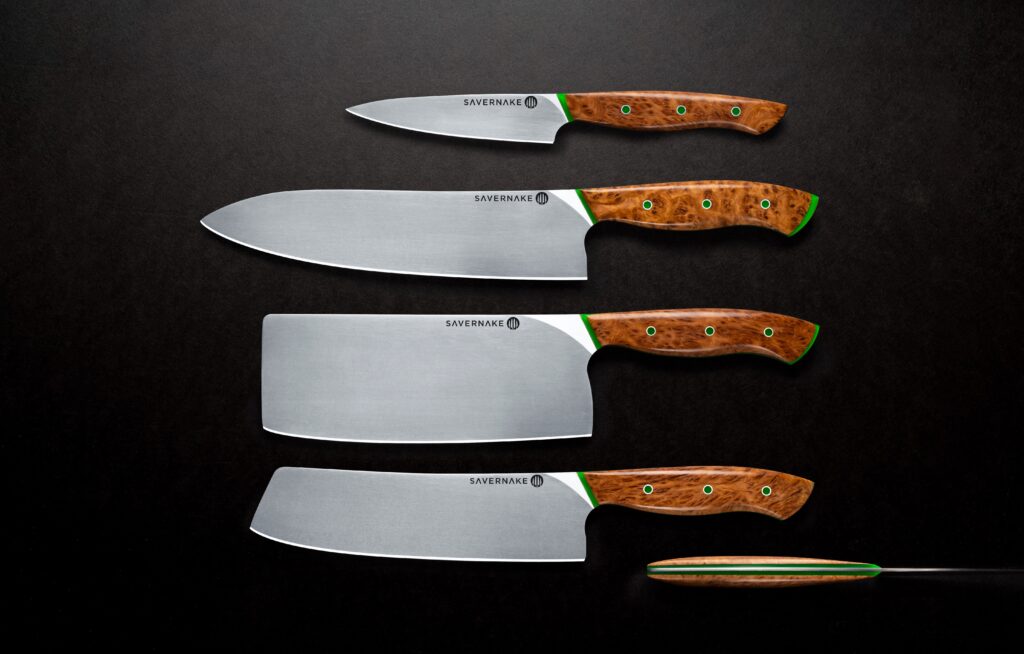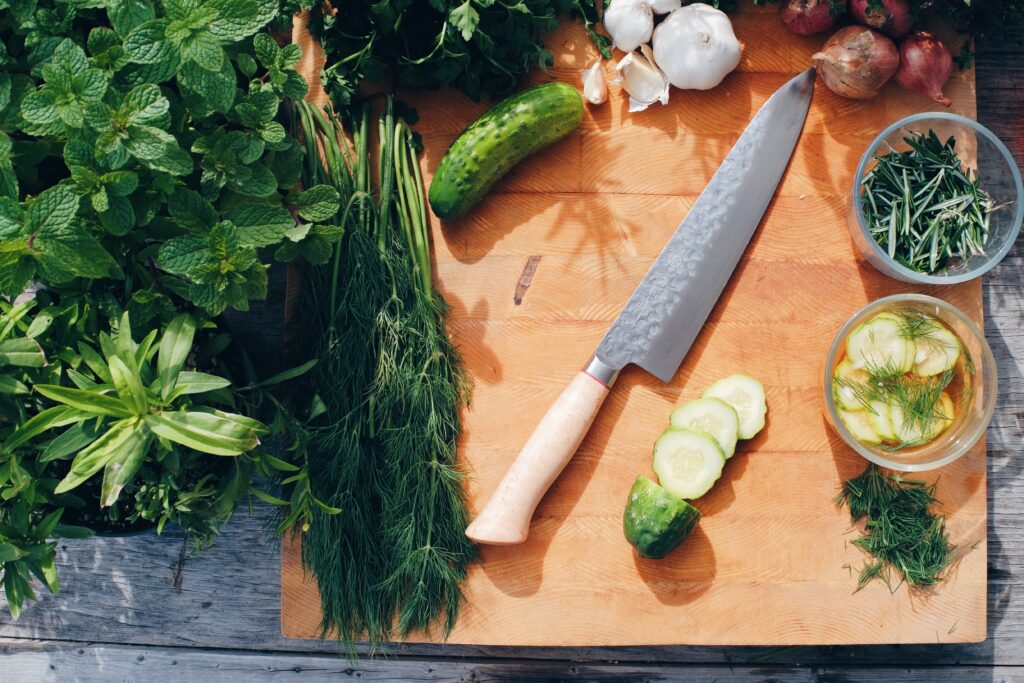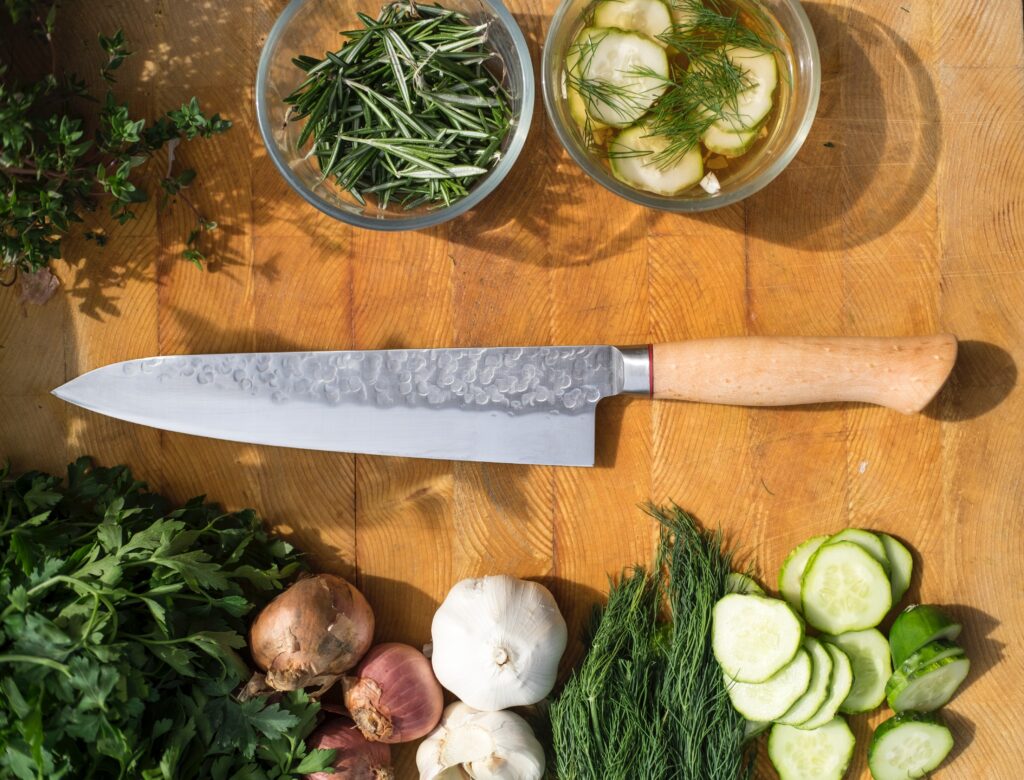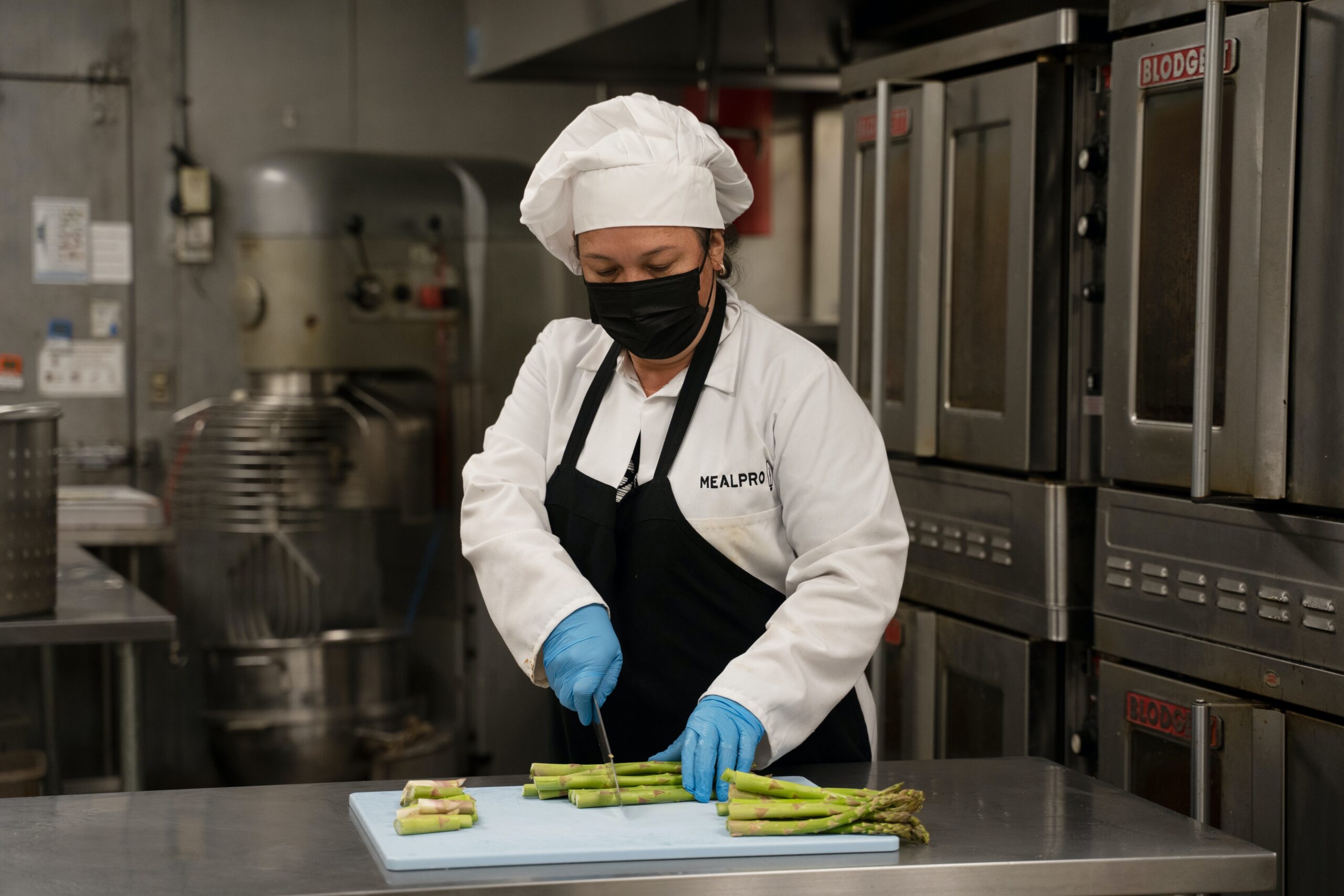Best Chef’s Types of Knives there are a number of different knives designed for a variety of kitchen tasks. These include the cleaver, which is one of the largest and heaviest knives and is often used for breaking up meat and other hard and thick foods.
A chef’s knife is a versatile kitchen knife that can do almost all of your basic kitchen tasks. It is generally between 8-12 inches long.

Cleaver
A large kitchen knife that resembles a rectangular-bladed hatchet, the cleaver is built for breaking down meat and other dense foods. It is a workhorse that handles tasks that would wear out a normal utility knife, such as mincing garlic or cutting tomatoes.
A cleaver’s tough metal and thick blade built to resist repeated blows directly into a hard food such as bone, cartilage, or sinew, that might crack or break thinner knives. These brawny kitchen tools also excel at crushing ingredients like watermelons and tough-skinned squashes. The longer blades can weigh as much as two pounds. They may feature a hole at the end to hang the knife for storage.
Boning
A friendly bully to the cleaver, the boning knife maneuvers around joints with ease and precision. Designed to separate meat from the bone, it comes in handy when cutting up chicken legs or butterflying pork chops. Its agile, flexible high-carbon, stainless steel blade typically made from slightly more ductile materials, making it less prone to damage from harder foods like bones or cartilage.

Boning knives are available in a range of styles and lengths, with blades between 4 and 7 inches long. They are also great for removing skin and preparing fish cuts before cooking.
Fillet
Knives vary widely in their uses and features, but the edge is nearly always the most important part. It what gives the knife its cutting power and allows it to used for a wide variety of tasks.
This category generally includes larger chef’s knives and carving knives (serrated and straight blade) – ideal for people more confident with handling a heavier knife and cooking larger main dishes. These not typically used for cleaving meat bones or smaller precision tasks, though specialty knives.
Carving
While general purpose knives like the chef’s knife will cut just about anything you’ll be cooking up in your kitchen, some foods require specialized blades. These specialty blades are one-purpose knives with very specific uses.
Boning knives have narrow, five to six-inch long blades that come in flexible and stiff options depending on the type of meat you’re removing bone from. They’re typically used for poultry, fish and some cuts of beef and pork.
Slicing knives have long, thin blades that either serrated or straight edged. These are great for cutting breads and torting cake layers, but their narrow, sharp blade also makes them perfect for small precision tasks like peeling, chopping and mincing.
Bread
Unlike the straight edge of a chef’s knife, which can squish soft or delicate foods, the wavy-looking blade of a bread knife allows you to cut through crust and softer vegetables without pressing down too hard and crushing them. These knives are also great for cutting tomatoes, which require a light touch so they don’t crush the juicy centers.
Longer than a paring knife but shorter than a chef’s knife, utility knives are ideal for general kitchen tasks and smaller precision tasks such as peeling. These versatile blades come in both serrated and straight styles. Typically between 7 and 10 inches in length, their narrow, paddle-shaped blade is usually sharp.

Utility
From scoring drywall to cutting fabric, rope and twine, utility knives found in many different places. A good utility knife will have a solid handle that feels comfortable to wield, and it should also have a bolster for added protection from accidental slips or cuts.
Utility knives are typically either straight blades or serrated. Straight blades allow for clean cuts, while serrated blades contain tooth-like notches that assist in cutting through foods with rough exteriors but soft interiors, such as breads and tomatoes. The best utility knives have retractable blades to keep the blade safe when not in use. Some also have built-in blade snappers for easy and convenient replacements.



